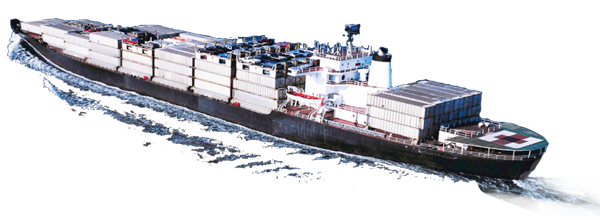Container transshipment service
Container transshipment service
Unloading of the first shipment
“The first shipment” means in international maritime transportation, a shipment which transport a transshipment container from port of departure to transshipment port. Transshipment documents will be sent to transshipment clerk after wharf stowage planner received it from ship company, and transshipment clerk input it into the computer. The transshipping data should be checked with the actual unloading after the ship is unloaded, and immediately notify the parties concerned to solve problems if any problems are found. Transshipment clerks should Correct the information in the computer in time after received the work contact note from the agent if the agent requires to change and supplement the transshipment information after the ship unloaded. The wharf transfer operator should take the initiative to contact with the agent and arrange the transportation of the second shipment in time if any transit containers still not be dispatched more than 14 days after unloading from the ship.
Loading of the second shipment
“The second shipment” means in international maritime transportation, a shipment which transport a transshipment container from transshipment port to the port of destination. After the transshipment notice is received by wharf transshipment clerk, the notice (customs release stamp is required) hand over together with the dynamic statement of the transit container which towed from the outer area to the quay to handled by stowage planners. Wharf transshipment clerk hand over the transshipment notice which has been marked actual loading situation of transit containers and unloading time by stowage planners and the dynamic statement which is shown as already loaded together to fee collection department. If there are any transit containers which towed from the outer area to the quay cannot be loaded because of some reason or other, wharf transshipment clerk need to keep the dynamic statement well for use.
Transit containers cross-district haulage
If the unloading of the first shipment and the loading of the second shipment of transit containers not at the same wharf, these transit containers have to be cross-district haulage after unloading. Wharf transshipment clerks of location of towing out arrange the exit plan and Issuing transit dynamic table which need to be attached to work application form and hand to the existing inspection gate in the same time. The driver handling equipment handover with clerk of inspection gate when the container is towed. The clerk leave one page of the dynamic table which need to be attached to exiting report hand over to fee collection department, and other two pages are leaved by the driver. Clerks of location of towing in inspection gate handling equipment handover with the driver and receive other two pages of dynamic table in the same time at the wharf of location of towing in. One of the two pages of table send to transshipment clerks, the other one is attached with entry report and send to fee collection department. The rest works are same as the work of the first section and the second section.
Transshipment of dangerous goods
Any transit containers contained with dangerous goods which cannot stockpiling at wharf, wharf transfer clerks should be strictly checked, inform forwarder to arrange transshipment in time to ensure the safety of wharf. The agent shall provide the relevant work contact note, and indicate the cost settlement method before transshipment. The driver handling equipment handover with clerk of inspection gate when the dangerous container is towed. The clerk leave one page of the dynamic table which need to be attached to exiting report hand over to fee collection department, and other two pages are leaved by the driver. Clerks of location of towing in inspection gate handling equipment handover with the driver and receive other two pages of dynamic table in the same time at the wharf of location of towing in. One of the two pages of table send to transshipment clerks, the other one is attached with entry report and send to fee collection department.
Changes of wharf of transit containers
There are two different situation of changes of wharf, one of it is the destination port of containers become the transshipment port, the other one is the transshipment port of transit containers become the destination port. The agent must provide notice (stamped by customs is required) and a manifest which has changed pots already to the dock operation department in time. Whether the notice of change port and the manifest after change ports are sent in time or not will involve the settlement of expenses. Wharf transshipping clerks must change the relevant information in time, and arrange containers transfer to relevant container zone, and send the notice of change port to wharf toll office for the voucher for expense settlement.
The setup arrangement of transit containers
If transit container need to setup arrangement because of container damaged, wrong type of container been used, etc, shipping agencies should send contact note to wharf and customs (Marked cost settlement method). If the setup arrangement need to be dealt with out of the wharf, the wharf need to formulate the project of exiting the yard and project of entry the yard according to the licence of customs; if the setup arrangement need working in the wharf, the setup arrangement should working under the supervision of the shipping agency, customs and tally clerk. Customs need to lead seal on containers after the setup arrangement finished.







